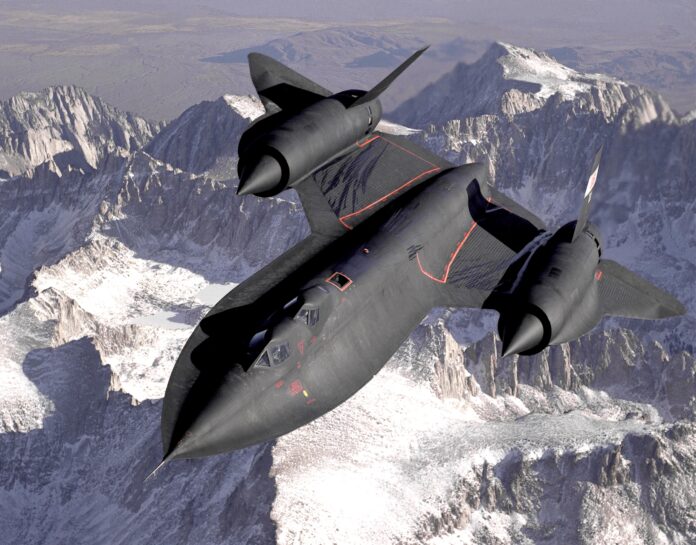The SR-71 Blackbird, a true marvel of aviation engineering, stands as a testament to human ingenuity and determination. Throughout its storied history, the SR-71 redefined the boundaries of speed, altitude, and stealth, earning its place as an iconic symbol of aerospace innovation.
Conceived during the height of the Cold War and developed by Lockheed’s Skunk Works division, the SR-71 was designed to meet the rigorous demands of high-speed reconnaissance missions. Introduced in 1966, its sleek and futuristic design was tailored for extreme performance. Powered by twin Pratt & Whitney J58 engines with afterburners, the Blackbird could achieve mind-boggling speeds of over Mach 3, allowing it to traverse vast distances in remarkably short periods.
One of the most remarkable features of the SR-71 was its heat-resistant skin, made from a special titanium alloy. This innovation was crucial to withstanding the intense temperatures generated by the aircraft’s rapid flight, which often exceeded 3,000 degrees Fahrenheit due to the air friction at its incredible speeds. This unique design element not only contributed to its iconic appearance but also enabled the SR-71 to outpace any threats that might attempt to intercept it.
The SR-71’s primary role was reconnaissance, gathering vital intelligence in hostile territories. Flying at altitudes well above 85,000 feet, it operated on the edge of space, beyond the reach of most enemy defenses. Its remarkable speed and altitude capabilities allowed it to quickly evade incoming threats, making it nearly invulnerable.
Over its operational years, the SR-71 collected invaluable intelligence during various international crises and conflicts. Its contributions ranged from monitoring arms control treaties to providing real-time imagery during wartime operations. Despite its remarkable achievements, the Blackbird’s advanced technology eventually led to its gradual retirement as newer reconnaissance methods emerged.
The legacy of the SR-71 continues to captivate aviation enthusiasts and historians alike. Its records, including its highest speed of Mach 3.3 and highest altitude of 85,069 feet, remain unbroken to this day. The SR-71 serves as a testament to the audacity of human innovation and a reminder that the pursuit of the impossible can lead to remarkable achievements.
As the Blackbird rests in museums and history books, its legacy lives on, inspiring generations of engineers, aviators, and dreamers to push the boundaries of what’s possible in the realm of flight and exploration. The SR-71 Blackbird’s indelible mark on aviation history is a testament to the relentless pursuit of excellence and the triumph of human imagination in the face of seemingly insurmountable challenges.
























